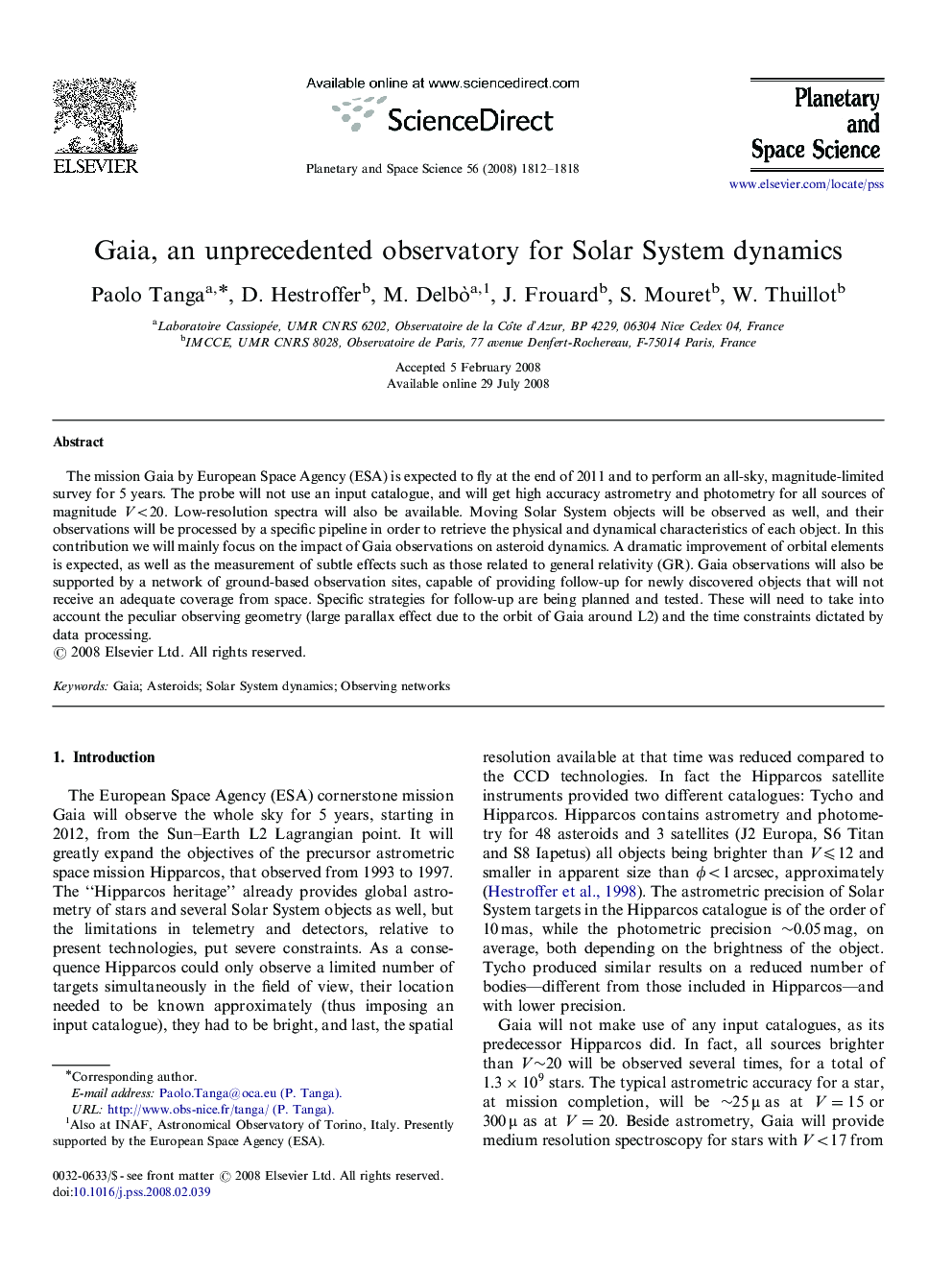| Article ID | Journal | Published Year | Pages | File Type |
|---|---|---|---|---|
| 1782083 | Planetary and Space Science | 2008 | 7 Pages |
The mission Gaia by European Space Agency (ESA) is expected to fly at the end of 2011 and to perform an all-sky, magnitude-limited survey for 5 years. The probe will not use an input catalogue, and will get high accuracy astrometry and photometry for all sources of magnitude V<20V<20. Low-resolution spectra will also be available. Moving Solar System objects will be observed as well, and their observations will be processed by a specific pipeline in order to retrieve the physical and dynamical characteristics of each object. In this contribution we will mainly focus on the impact of Gaia observations on asteroid dynamics. A dramatic improvement of orbital elements is expected, as well as the measurement of subtle effects such as those related to general relativity (GR). Gaia observations will also be supported by a network of ground-based observation sites, capable of providing follow-up for newly discovered objects that will not receive an adequate coverage from space. Specific strategies for follow-up are being planned and tested. These will need to take into account the peculiar observing geometry (large parallax effect due to the orbit of Gaia around L2) and the time constraints dictated by data processing.
